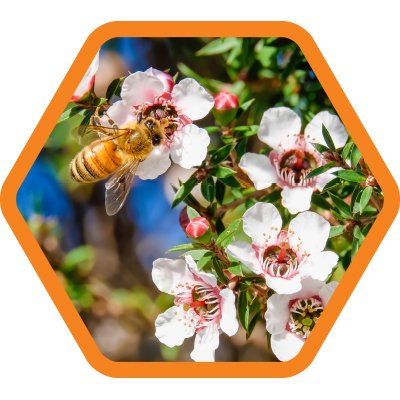The History of Manuka Honey
One of the most important ingredients in HoneyCure is Manuka honey! Manuka honey is produced from the Manuka tree (Leptospermum scoparium) and is native to the coastal areas of New Zealand and Australia. Before it was brought to western culture, Manuka honey was first discovered by the indigenous Māori people of mainland New Zealand.
The Māori arrived in New Zealand roughly between 1320 and 1350 from East Polynesia. During their several centuries of isolation on the island, they developed their own culture that evolved from other eastern Polynesian cultures. The word, mānuka, is the Māori name for the manuka tree. Just like many other Māori words, the spelling manuka, without the macron, is common in English.
The Māori were the first to use the Manuka tree for many different purposes. They used the redwoods to create tools and weapons, and the bark to make water containers and waterproof layers for roofing. The main and most important use for the Mauka tree was for medicinal purposes. The bark was used to topically treat wounds and internally to prevent gum disease. The Māori would burn the bark, and use the ash to treat skin diseases. They would also boil the leaves in water to produce a vapor to help with colds and sore throats.
In the 18th century, European settlers made contact with the Māori. The Māori showed the Europeans the way their many uses of the Manuka tree. When trying the Māori uses, Captain James Cook realized that the Manuka leaf could be used as an alternative to tea and was even seen to help reduce the severity of scurvy in his crew.
Did you know Manuka honey can only be produced by the European honey bee? In 1839, an English beekeeper, Mary Bumby, introduced honey bees to New Zealand. She brought hives to the East Coast of the North Island where there are many manuka trees. New Zealand has a diversity of trees, making it the ideal environment for honey bees. By the 1860s, there were many honey bee colonies throughout the forests of New Zealand. The Māori learned to farm wild honey and they became New Zealand’s first commercial beekeepers.
Even though many used Manuka honey, it was not until the 1980s that the benefits of Manuka honey were scientifically acknowledged. Dr. Peter Molan, a biochemist from New Zealand, conducted a study and discovered the antibacterial activity present within Manuka honey. This set the path for Manuka honey to be one of New Zealand’s biggest exports. The tree blooms only 2-6 weeks per year, but the demand for Manuka honey grew in the 1980s and 1990s.
Now, Manuka honey is recognized for its antibacterial and anti-inflammatory capabilities. Manuka honey is the main and most active ingredient in HoneyCure! It supports wound healing and closure with minimal discomfort and scarring. Try HoneyCure today!
Reference:
Gardiner, Jeremy. “New Zealand Manuka Honey.” Manuka, 11 Jan. 2019, https://www.manuka-extra.co.nz/blogs/news/new-zealand-manuka-honey.
“Mānuka Honey.” Wikipedia, Wikimedia Foundation, 6 July 2022, https://en.wikipedia.org/wiki/M%C4%81nuka_honey.
Manuka Honey of NZ. “The History of Original Manuka Honey.” Manuka Honey of NZ, https://manukahoneyofnz.com/blogs/manuka-honey-blog/the-history-of-original-manuka-honey#:~:text=Native%20to%20New%20Zealand%20the,was%20as%20a%20medicinal%20plant.
“Māori People.” Wikipedia, Wikimedia Foundation, 23 July 2022, https://en.wikipedia.org/wiki/M%C4%81ori_people.
“The History of Manuka Honey in New Zealand.” Midlands, 6 Oct. 2021, https://www.midlandsnz.com/the-history-of-manuka-honey-in-new-zealand#:~:text=Manuka%20Honey%20Is%20Born,produced%20at%20this%20very%20spot.




